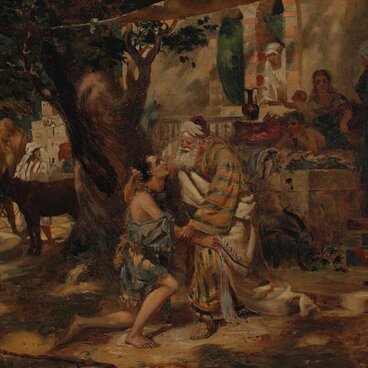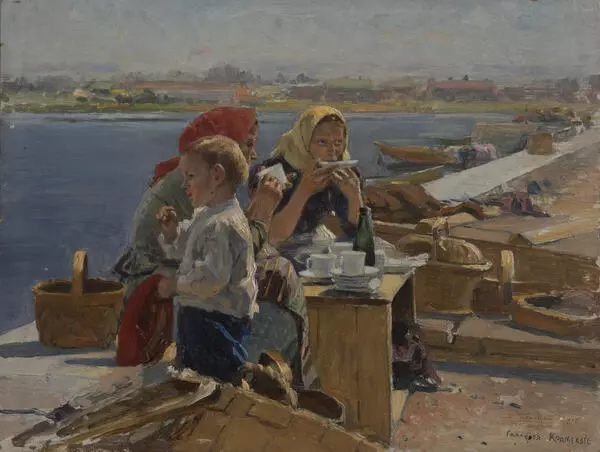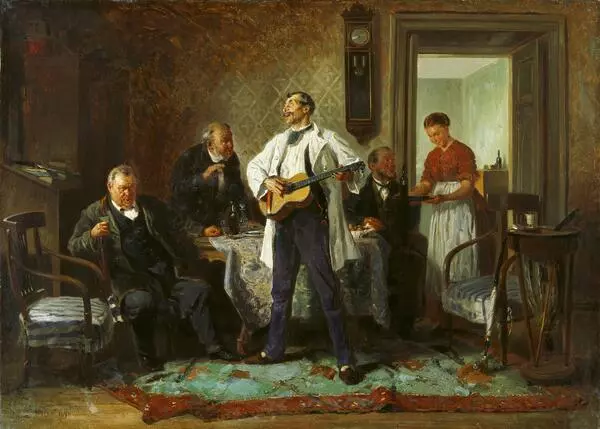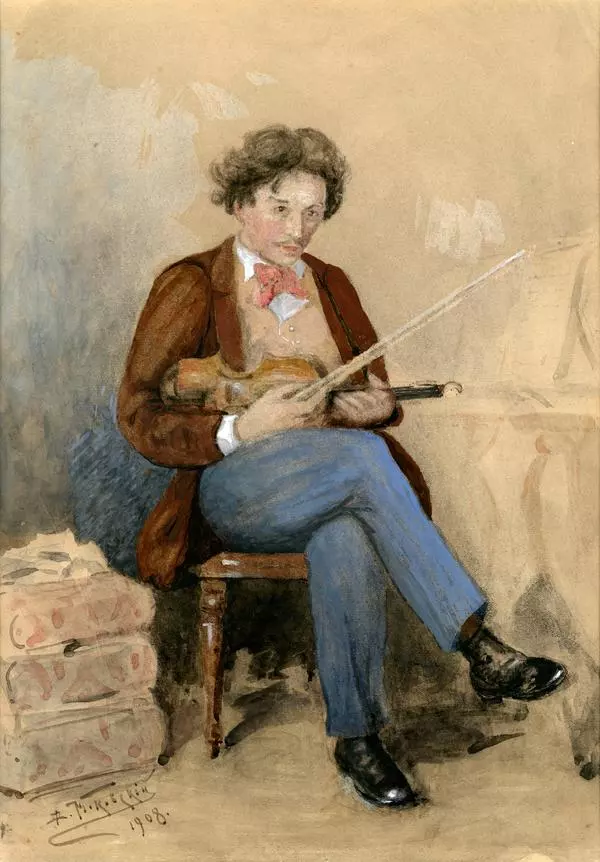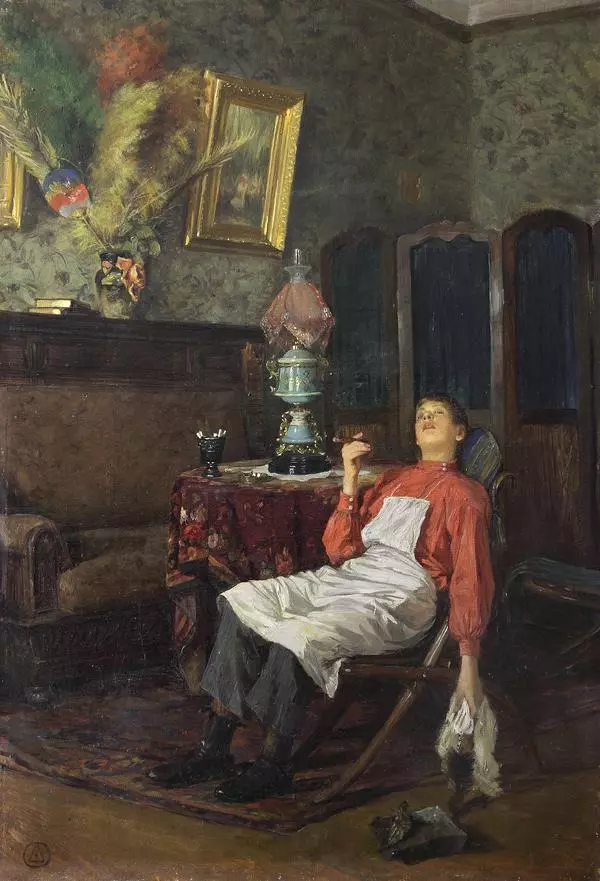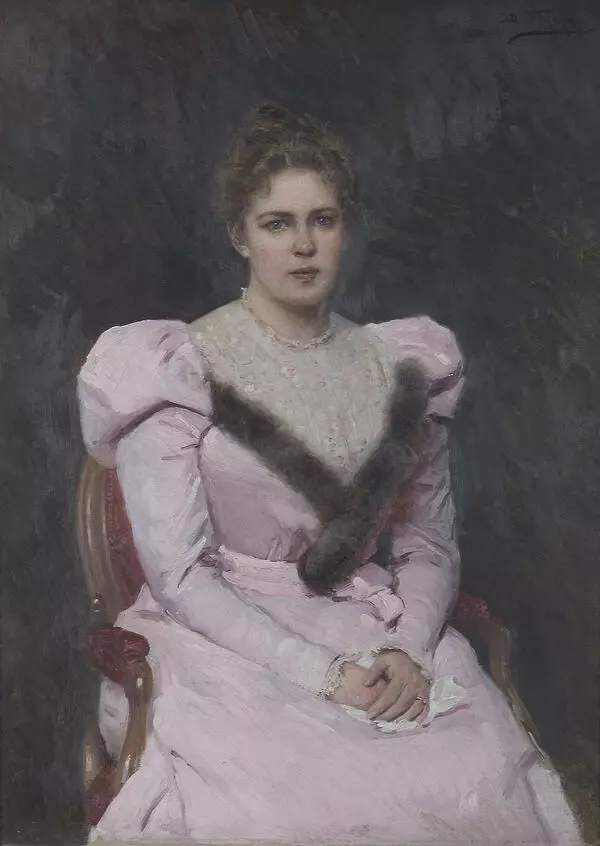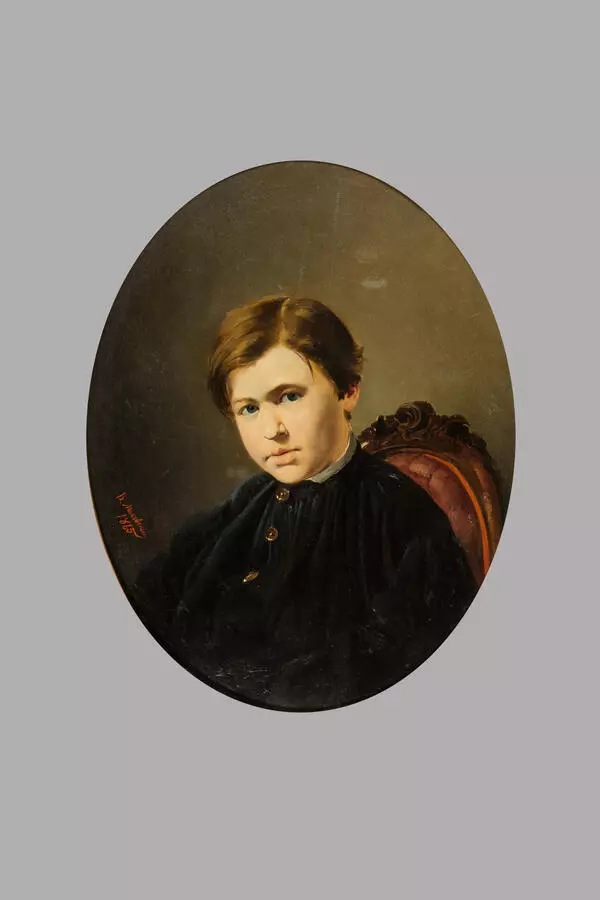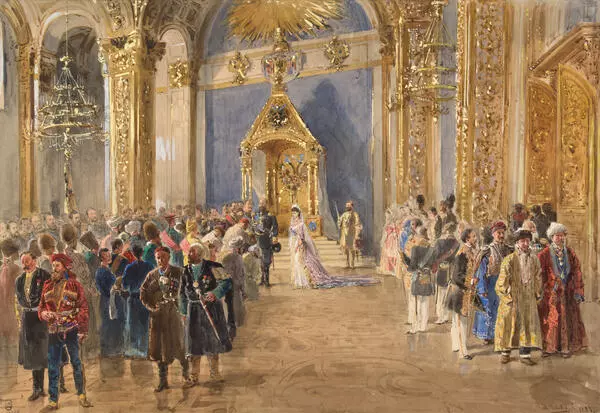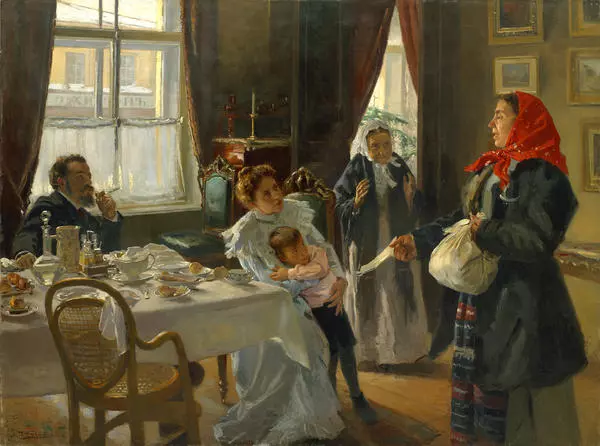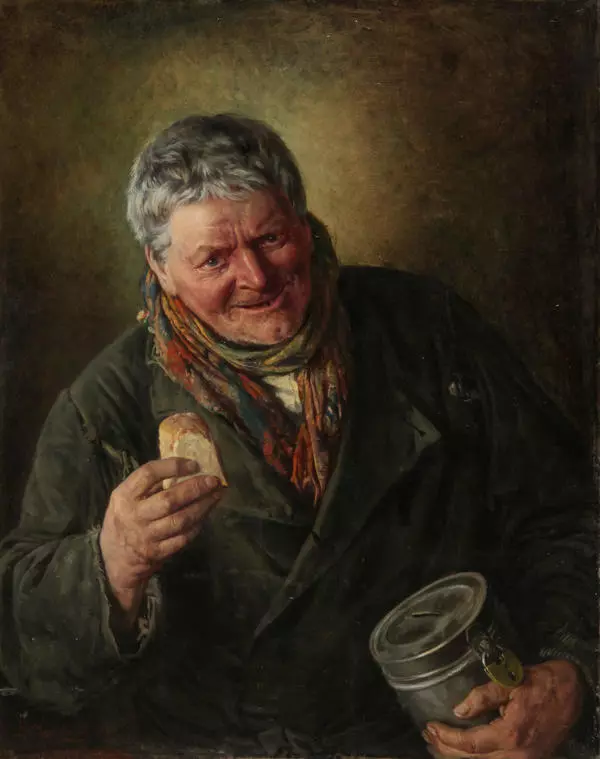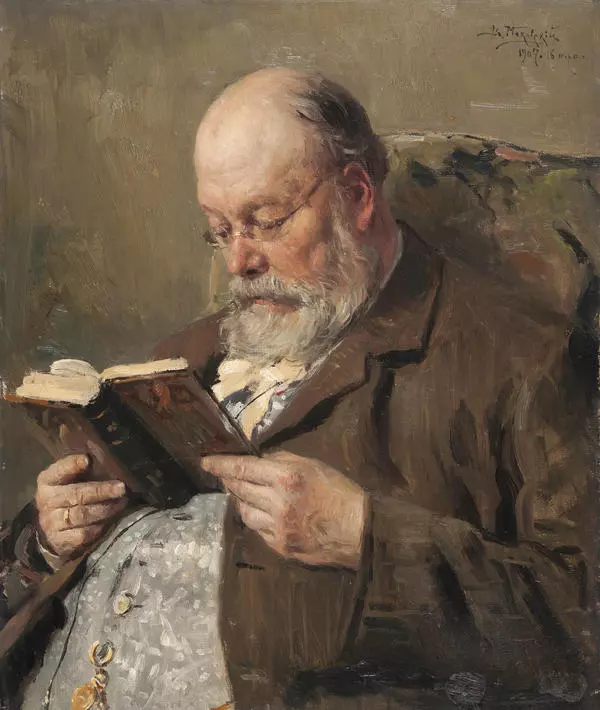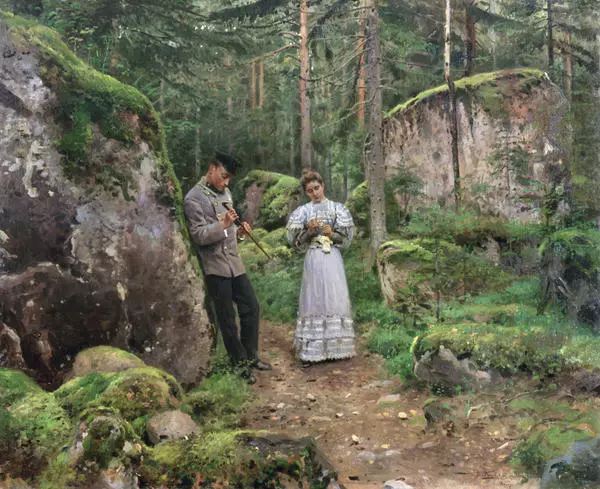After successfully graduating from the Moscow School of Painting and Sculpture and the St. Petersburg Academy of Arts, the famous painter Vladimir Egorovich Makovsky (1846–1920) achieved particular success in the sphere of genre painting. Having become a member of the Society for Traveling Art Exhibitions, he adopted their understanding of the ideological, critical, moral, and educational goals of art. In the 1870s, his art was characterized by anti-clericalism and a critical approach, typical of democratic artists.
The museum houses the painting “Singers in the Choir Gallery” which belongs to the early period in the artist’s career. Its satirical approach reveals a certain influence from Pavel Fedotov and Vasily Perov. However, Vladimir Makovsky avoided severe mockery and satire. Instead, his work clearly demonstrated the artist’s sense of humor and keen observation. He was interested in representatives of various social classes. Vladimir Makovsky had an excellent visual memory and a rare ability to notice interesting scenes in real life, as well as to find interesting characters and depict them masterfully. He portrayed the satiety, narrow-mindedness, hypocrisy, arrogance, and complacency of his characters in a true-to-life manner. They are devoid of any passion or sincerity. It seems like the characters in the painting are having different experiences. The artist paid close attention to their faces, poses, gestures, and behavior. He painted the details of the church robes but did not overload the scene with unnecessary details. The artist skillfully placed the characters inside the church where divine service takes place.
Critics appreciated the painting “Singers in the
Choir Gallery”, and Fyodor Mikhailovich Dostoevsky praised it in one of his
articles. The painting was demonstrated at the Academic Exhibition in 1870
under the title “Court Psalm Readers in the Choir Gallery”, at the World’s Fair
in Vienna in 1873, and at the All-Russian Exhibition in Moscow in 1882, under
the title “Choir Singers”.


